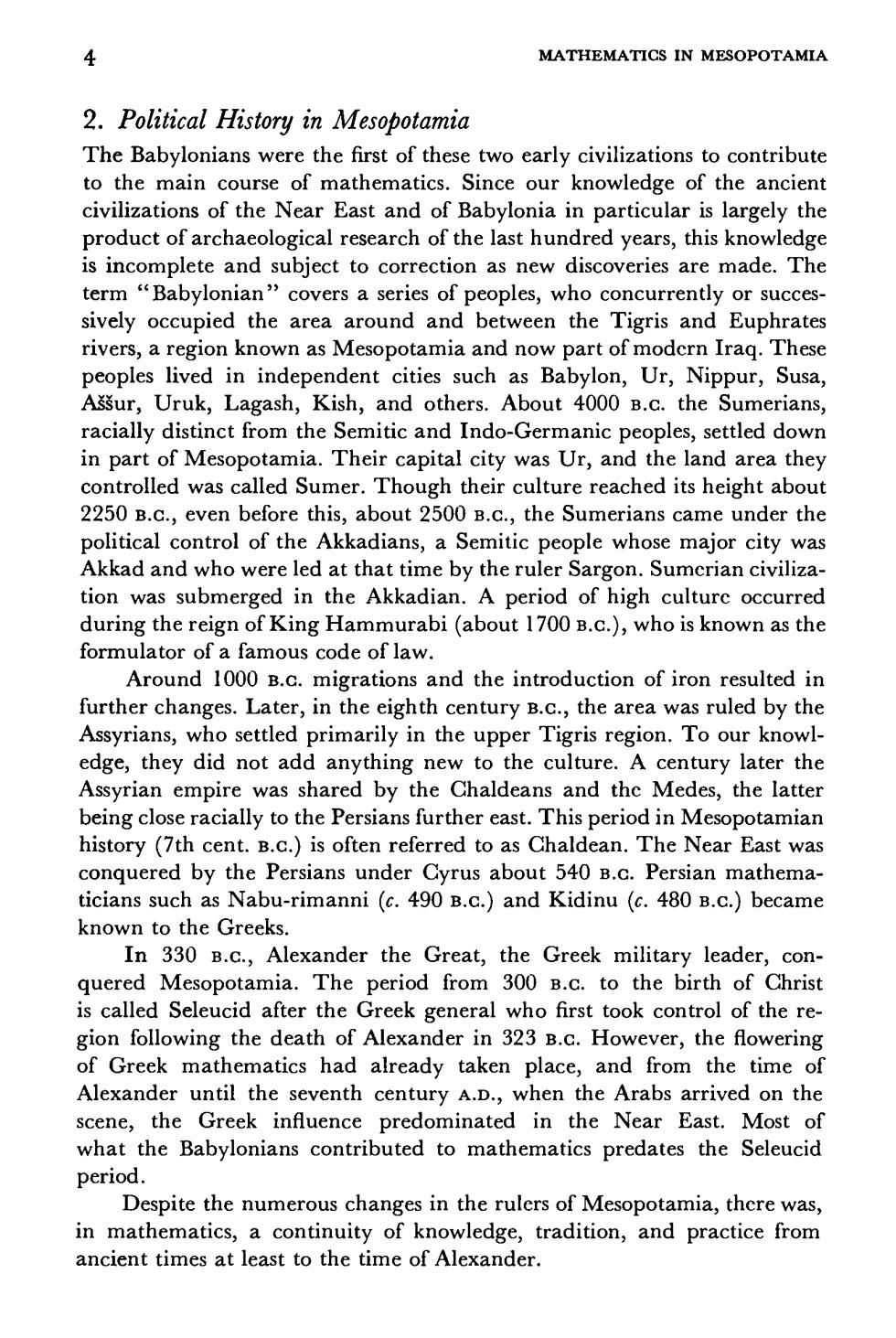正在加载图片...

MATHEMATICS IN MESOPOTAMIA 2.Political History in Mesopotamia The Babylonians were the first of these two early civilizations to contribute to the main course of mathematics.Since our knowledge of the ancient civilizations of the Near East and of Babylonia in particular is largely the product of archaeological research of the last hundred years,this knowledge is incomplete and subject to correction as new discoveries are made.The term "Babylonian"covers a series of peoples,who concurrently or succes- sively occupied the area around and between the Tigris and Euphrates rivers,a region known as Mesopotamia and now part of modern Iraq.These peoples lived in independent cities such as Babylon,Ur,Nippur,Susa, Assur,Uruk,Lagash,Kish,and others.About 4000 B.c.the Sumerians, racially distinct from the Semitic and Indo-Germanic peoples,settled down in part of Mesopotamia.Their capital city was Ur,and the land area they controlled was called Sumer.Though their culture reached its height about 2250 B.c.,even before this,about 2500 B.c.,the Sumerians came under the political control of the Akkadians,a Semitic people whose major city was Akkad and who were led at that time by the ruler Sargon.Sumerian civiliza- tion was submerged in the Akkadian.A period of high culturc occurred during the reign of King Hammurabi (about 1700 B.c.),who is known as the formulator of a famous code of law Around 1000 B.c.migrations and the introduction of iron resulted in further changes.Later,in the eighth century B.c.,the area was ruled by the Assyrians,who settled primarily in the upper Tigris region.To our knowl- edge,they did not add anything new to the culture.A century later the Assyrian empire was shared by the Chaldeans and the Medes,the latter being close racially to the Persians further east.This period in Mesopotamian history (7th cent.B.c.)is often referred to as Chaldean.The Near East was conquered by the Persians under Cyrus about 540 B.c.Persian mathema- ticians such as Nabu-rimanni (c.490 B.c.)and Kidinu (c.480 B.c.)became known to the Greeks. In 330 B.c.Alexander the Great.the Greek military leader.con- quered Mesopotamia.The period from 300 B.c.to the birth of Christ is called Seleucid after the Greek general who first took control of the re- gion following the death of Alexander in 323 B.c.However,the flowering of Greek mathematics had already taken place,and from the time of Alexander until the seventh century A.D.,when the Arabs arrived on the scene,the Greek influence predominated in the Near East.Most of what the Babylonians contributed to mathematics predates the Seleucid period. Despite the numerous changes in the rulers of Mesopotamia,there was, in mathematics,a continuity of knowledge,tradition,and practice from ancient times at least to the time of Alexander